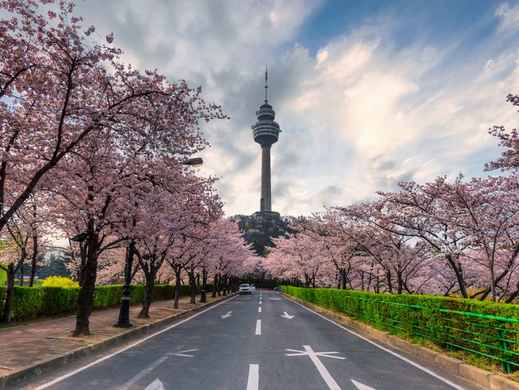


Gwangju
Asia
/
South Korea
/
Gwangju
Located in South Korea's southwestern region, Gwangju is a vibrant city skillfully blending historic richness with today's urban vibe. It differs from other cities with its unique seasonal transitions - the city streets are bedecked with cherry blossoms during spring, a humid summer fades into an autumn teeming with colorful foliage, followed by a brisk winter.
Gwangju, fondly referred to as the "City of Lights," holds a crucial historical significance for being instrumental in the May 18 Democratic Uprising of 1980 - an indelible part of Korean democracy. Even today, this fervor of resistance and creativity thrives in the city's dynamic art scene, galore of galleries, and the esteemed Gwangju Biennale.
A culinary expedition in Gwangju is incomplete without tasting its celebrated kimchi, particularly the signature "Gwangju-style tteokgalbi" (grilled short rib patties). The Yangdong Market, which is among Korea's largest traditional markets, is the epitome of local life and street food culture.
Not-to-be-missed attractions include the distinctive Asian Culture Center - a hub for contemporary art exhibitions and cultural performances, along with Mudeungsan National Park’s tranquility. The park’s hiking trails present awe-inspiring city views. The May 18th National Cemetery is a poignant tribute to the city folk's relentless fight for democracy.

Travel Tips for Gwangju
What you need to know before traveling here
Getting Around Gwangju
A guide to Gwangju's local transportation
Navigating Gwangju is easy, thanks to its single metro line running from the city's north to the south. Grab a T-money card from any station, and top it up. All stations feature English signboards, and announcements are made in Korean and English. Operational hours range from 5:30 AM to midnight.
Practical Tips for Gwangju
Things to prepare and best way to visit
The KTX high-speed train can cover the distance in roughly 2 hours, departing from Seoul Station. A bus ride is a cheaper option, taking around 4 hours.
Although not as widespread as in Seoul, English can be commonly encountered at key tourist locations and hotels. It's beneficial to learn some basic Korean phrases and have a translation app handy.
Spring (April-May) and autumn (September-October) bring pleasant weather and striking landscapes. The months of July and August, being hot and rainy, are best avoided.
Economy travelers can make do with 50,000-70,000 won in a day, while mid-range travelers might want to allocate 100,000-150,000 won, inclusive of accommodation.
While most places accept credit cards, it’s advisable to keep some cash handy, especially for traditional markets and small eateries.
See All Practical Tips for Gwangju

Travel Tips for Gwangju
More Destination Near Gwangju












 Facebook
Facebook Instagram
Instagram TikTok
TikTok Youtube
Youtube Telegram
Telegram
